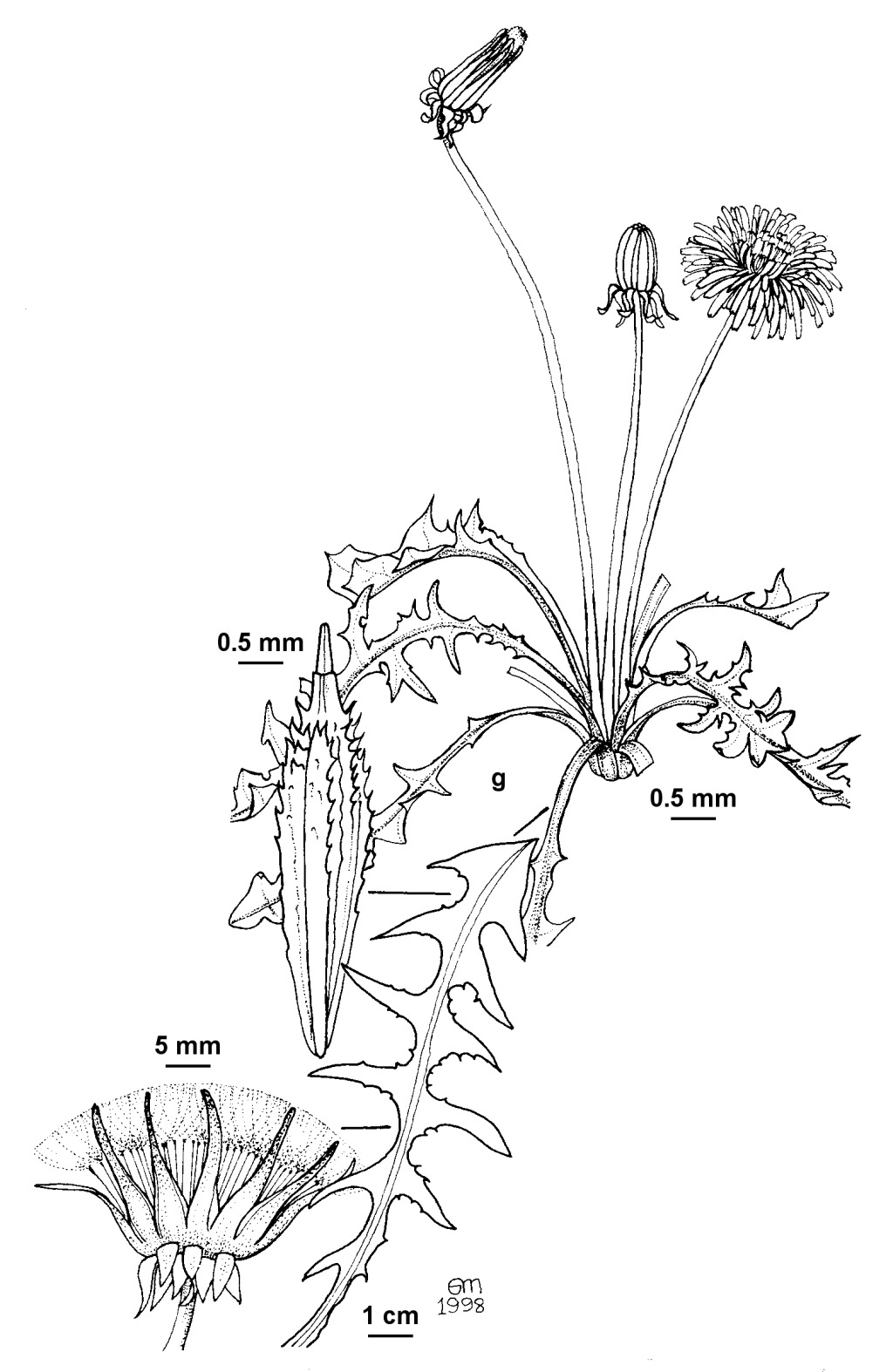Taraxacum subbracteatum
A.J.Richards DandelionLeaves lanceolate to oblanceolate, c. 10–20 cm long, 2–6 cm wide, glabrous; lateral lobes in 4–6 pairs, deltoid, distal margins of upper 2 or 3 lobes entire or with 1(–3) patent, acute lobules, proximal margins entire, usually convex; petiole brown-purple with interwoven green strands, narrowly winged. Scapes c. 8–10 cm long at anthesis, c. 20 cm long in fruit, usually ebracteate. Capitula 2–3 cm diam.; outer bracts ovate-lanceolate to lanceolate, 3–8 mm long, 2–3 mm wide, erecto-patent, not laciniate, very narrowly white-bordered (c. 0.1 mm), not callus-tipped; innermost bracts linear, 12–18 mm long, 1.5–2.5 mm wide, not callus-tipped. Outer ligules flat, exceeding involucre by 4–6 mm; anthers with pollen; stigmas greenish-yellow. Cypselas broadly fusiform, c. 3 mm long, 0.8 mm wide, straw-coloured, with minute spines at apex, smooth in the lower two thirds; cone conical, 0.3–0.8 mm long; beak 0.8–8 mm long; pappus c. 5 mm long. Flowers Sept.–Apr.
Also ACT. Native to England. Recorded from damp urban habitats near Melbourne and Drouin in west Gippsland, but probably more widespread.
This species is very closely related to T. bracteatum, generally a more robust species, but is readily distinguished by the smaller cypselas and smaller, or absent, scape bracts. It is a member of section Celtica.
 Spinning
Spinning
